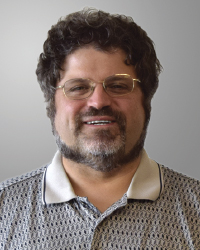
Multiphoton techniques go deeper into detail
 As scientists seek to image deeper in tissue with high enough resolution to track cellular processes, they are increasingly turning to multiphoton techniques. In multiphoton microscopy, longer-wavelength photons, which have lower energy and penetrate further than their shorter-wavelength counterparts, cause less tissue damage while imaging at greater depths. But, historically, these systems have required sophisticated and complex instrumentation that has put them out of reach for many clinical and laboratory settings.
As scientists seek to image deeper in tissue with high enough resolution to track cellular processes, they are increasingly turning to multiphoton techniques. In multiphoton microscopy, longer-wavelength photons, which have lower energy and penetrate further than their shorter-wavelength counterparts, cause less tissue damage while imaging at greater depths. But, historically, these systems have required sophisticated and complex instrumentation that has put them out of reach for many clinical and laboratory settings.
This situation is changing. In our January/February issue, we published a story by Mihaela Balu, who wrote about a compact imaging head that could house a femtosecond fiber laser along with associated optics and mechanics and a rack-mounted power supply. She said it could remove the inefficiencies created by steering mechanisms, and she described how these developments could enhance the resolution of features when imaging the skin.
In this edition of BioPhotonics, authors Michael E. Holmes, Nkechi Holmes, Stefanie Kiderlen, and Lukas Krainer explain that using light in the NIR range leads to lower scattering in tissue, with less photobleaching — for example, capturing fluorescent tags in animal brains that indicate specific neuronal activity. The authors also cover the importance of the scan head design, which needs to include galvo-resonant mirrors, photo multiplier tubes, objectives, a wide-field camera, illumination, and lasers. As they illustrate here, when these elements are combined into one form factor, the design of the scan head is adaptable to virtually any experiment.
The desire for compactness is also addressed by McKenzie Peterson, who writes that a number of companies and universities have set to work to configure an effective and portable OCT device. The light source, reference arm, and sample arms have been moved to the scanner, with only the spectrometer and computer located in the device itself. 3D printing has helped produce the unique parts that these devices require, in far shorter time than traditional machining. Learn more here.
Elsewhere in this edition, Alexis Méndez writes about how thin, flexible, dielectric optical fibers have been used in endoscopes for many years and are being used in minimally invasive and robotic surgery. Read about these exciting developments here.
Amanda Dobbins, Stephanie Herzog, and Mathias Strackharn write about a laser scanning method that is already used in additive manufacturing and that takes full advantage of a galvanometer motor, reduces errors, and can scan various shapes and structures. The technology could be the foundation of the next generation of ophthalmic procedures. Discover here what the future may hold.
Finally, in “Biopinion,” Jenna Mueller discusses the impediments to accessing safe and effective surgeries in low- and middle-income countries, where state-of-the-art operating suites are often unavailable, and portability and versatility are vital when using imaging technology. Her research team has been developing a laparoscope that is designed for surgeons in these settings. She argues that engineers of biomedical optics need to develop systems that require fewer consumables, such as syringes and oxygen, and limited maintenance to bring the benefits of safer operations to those who need them most. Regulatory processes must also be streamlined to produce real change in developing parts of the world. Read what she has to say here.
Enjoy the issue!

Published: September 2022